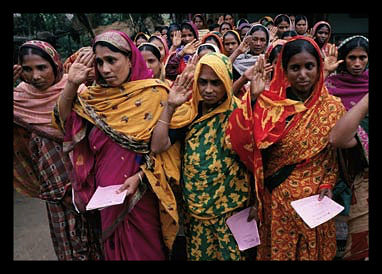Violence Against Women is Global Health Epidemic
 Physical or sexual violence against women is causing a global health problem of “epidemic proportions,” according to a new study released by the World Health Organization on June 20.
Physical or sexual violence against women is causing a global health problem of “epidemic proportions,” according to a new study released by the World Health Organization on June 20.
The report, “Global and regional estimates of violence against women: prevalence and health effects of intimate partner and non-partner sexual violence,” was released in partnership with the London School of Hygiene and Tropical Medicine and the South African Medical Research Council. According to the report, more than 1 in 3 women globally are impacted by physical or sexual violence. The perpetrator of such violence is usually an intimate partner: it affects an estimated 30 percent of women worldwide.
The new study compared this violence in high-income countries with that in other countries. The study found that 23.2 percent of women living in high-income countries experience intimate partner violence, as compared with 36.6 percent in Africa, 37 percent in the Eastern Mediterranean region, and 37.7 percent in South-East Asia.
“These findings send a powerful message,” said Margaret Chan, director-general of WHO. “We also see that the world’s health systems can and must do more for women who experience violence.”
The report looked at the impact of violence on both the physical and mental health of girls and women, including broken bones, pregnancy-related complications, impaired social functioning, and mental problems.
Other findings on the health impacts of intimate partner violence were staggering. The report found that 38 percent of all women who were murdered were killed by their intimate partners. Women who experienced this were twice as likely to have alcohol-use problems and were 1.5 times more likely to acquire syphilis, chlamydia or gonorrhea. In some regions such as sub-Saharan Africa, those women were also 1.5 times more likely to acquire HIV.
The report called for a major scaling up of violence-prevention efforts by addressing social and cultural factors that could be impacting the prevalence of violence. It also called for better health care for women experiencing it. Simply teaching health workers how to respond to violence could be helpful, the report noted.
The report pulled data from dozens of regional and national studies for the first time. By using regional data it was also able to highlight regional patterns. For example, women in Africa are almost twice as likely to experience violence as women living in lower and middle-income countries in Europe.
– Liza Casabona
Source: World Health Organization, The Guardian
Photo: The Guardian
